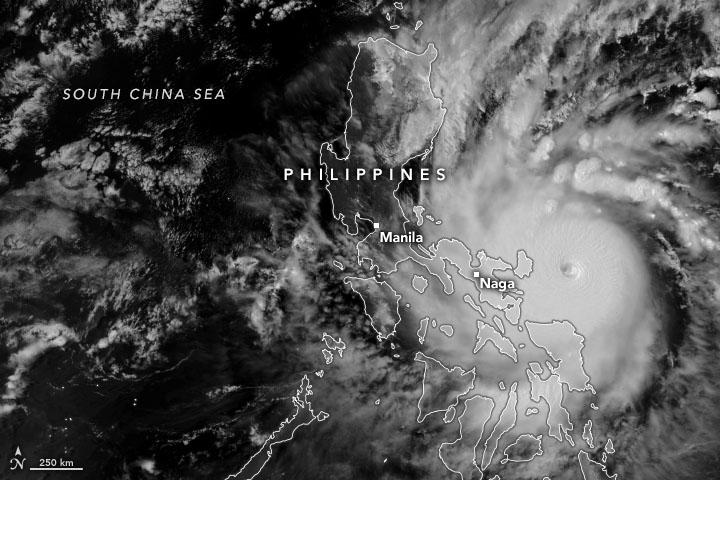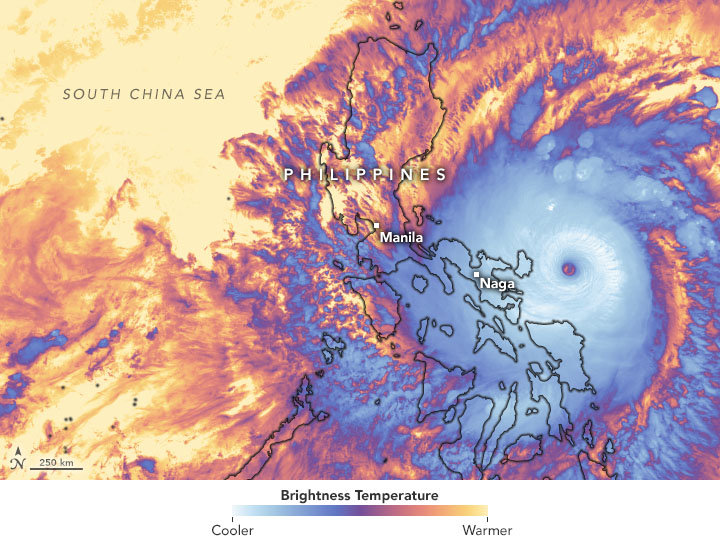On November 1, 2020, the Philippines was hit by the strongest storm of the year. The Common Typhoon Alert Center told me about it Super Typhoon Goni arrived ashore the maximum wind speed is 310 kilometers (195 miles) per hour near downtown.
Aid organizations recommend that on the island of Catanduanes, where the storm originally landed, as many as 90 percent of the buildings were destroyed. While the national capital, Manila, was largely spared, the storm destroyed tens of thousands of homes on the island, displaced more than 300,000 people and killed at least 20 people. From November 2, The Philippine Red Cross reported that Catanduanes Island had no access to electricity, water or the cellular network.
Of 31 October 2020 Visible Infrared Imaging Radiometer Suite The (VIIRS) device on NASA-NOAA’s Finland nuclear power plant satellite took these natural and infrared images of Goni (known locally as Rolly) before landing. The image on the right shows the brightness temperature information, which is useful for distinguishing cloud structures (blue) from the surface below (yellow).
Goni began to accelerate rapidly on October 28, and grew from tropical depression with winds of 50 miles per hour, to 280 miles per hour to a super typhoon in 54 hours. Terms enhancement was almost ideal: Goni faced a humid atmosphere, a very warm ocean temperature and a slight wind cut.
The country experiences an average of 20 storms and typhoons a year. However, the last typhoons approaching the area with this strength were Super Typhoon Meranti in 2016 and Super Typhoon Haiyan in 2013.
Goni has since weakened into a tropical storm and that is to be expected to land in central Vietnam This week. Goni is the sixth tropical storm to hit Vietnam since early October. Vietnam is still leaning towards the recent typhoon Molave, which was one of the strongest storms to hit the country in decades.
NASA Earth Observatory images by Joshua Stevens using VIIRS data NASA EOSDIS / LANCE and GIBS / Worldview and Finland’s national Polar touring partnership. Story: Kasha Patel.


